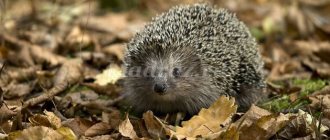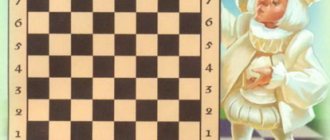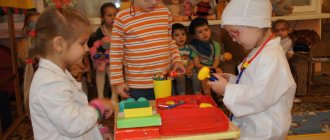The appearance of decorative birds in the homes of ancient inhabitants
Domestic decorative birds appeared in ancient times: people wanted their homes to have some zest, to have fun and hear wonderful melodies all the time. This is why they caught birds and put them in cages. And so, gradually, some species of birds were able to get used to being kept in captivity. But not all of them were able to become domesticated: mostly only bright and melodious ornamental birds – the canary and the parrot – were domesticated. In ancient times, only noble people could afford to keep birds in captivity, while the common people simply did not have enough time for this. And in the modern world, decorative birds live in almost every home: they have filled the lives of millions of people around the world with their colors.
If you want to get yourself a feathered pet, then you shouldn’t rush to make a choice: you need to take this very seriously, because then life with the wrong pet can become torture not only for you, but also for the animal itself.
Presentation on the topic: Decorative, song and wintering birds
Description of the slide: The nightingale He clicks, rumbles, whistles, murmurs, chirps Like a rainstorm, he bubbles, rings like a bell, Then on his fifth knee he suddenly peals, And then he plays the trills of a caring pipe - On the shore above the slope, where there is a green talnik, Where the hops have grown wild, the great artist sings. (Nightingale) The nightingale belongs to the passerine order, the thrush family. This is a small brown bird (14-17 cm). With strong and long legs, with large dark eyes. The eyes give the nightingale a special charm. The color of the feathers is brown, and the tail is red. The nightingale bird lives in Europe, Africa, Asia. The common nightingale nests in Russia, and the bluethroat in the North Caucasus. In Siberia and the Far East: ruby-throated nightingale, black-breasted ruby-throat, blue whistling nightingale. Among the songbirds of Russia, the nightingale is the most common bird. For the winter, these birds fly to warm countries. In spring, nightingales fly to their homeland at the time when grass begins to grow and leaves bloom on trees and shrubs. Having returned home, the nightingales find their old nests and begin to sing. The nightingale sings day and night. Most often, the bird's song can be heard from the thickets of lilac and alder. The best singers are considered to be the eastern and western nightingales. Nightingales are wonderful singers. And the spring song of the nightingale will penetrate the heart of any person. The bird stands high on legs spread apart, wings down and tail raised. While holding it, he often bows and sings. The nightingale's song consists of many sounds, as well as whistling, clicking and rumbling sounds. Nightingales feed on insects: ants, weevils, ground beetles, caterpillars, centipedes, flies. In autumn they prefer berries and seeds. The nightingale places its nest on the ground, near the roots of a bush, overgrowth, or in a pile of dry autumn leaves. A clutch of 4-6 eggs is olive or brown-olive, brown in color. Incubation lasts about two weeks. The chicks are fed by both parents for 12 days. At the beginning of July, the chicks leave the nests. The departure of nightingales begins from late August to September. In captivity, nightingales live a long time and sing well, although they get used to humans with some fear. The main food for birds can be a mash: hard-boiled chopped eggs, grated carrots, apples, chopped white cabbage, crushed corn, grated white crackers, cottage cheese, prunes, raisins, fruits, rowan berries. Mealworms, sprouted grains of wheat and barley should be given. Do not forget about mineral feed: river sand, crushed shell rock, crushed eggshells. Charcoal should be offered occasionally. The nightingale needs a comfortable large cage with a bush and a cup base for the nest.
jays
Jays, in addition to their bright plumage, also have one very incredible quality: they can imitate any sounds they have ever heard.
Birds are not very demanding in terms of nutrition and care; they can eat regular feed mixtures. It is recommended to buy a small chick rather than an adult bird because it will be much easier to tame.
Finches
Finches can also sometimes be kept at home. These small birds have bright, catchy plumage, which is why they have gained such great popularity among breeders.
It is not very easy to distinguish between a male and a female, so when purchasing a bird, pay special attention to this point. Female finches do not sing, but the males produce such beautiful melodies that the lack of a female may not even be noticed if you buy two birds.
Finches
Finches live in the wild in the tropics. They have a specific bright color. This attracts the attention of a huge number of bird breeders. The birds look quite impressive and exotic. The birds are also quite active and funny. They are easily tamed and, with proper care, can become good friends for anyone. It can also be noted that finches do not sing very beautifully - and this is their biggest disadvantage. Their singing sounds like some kind of whistling or even hissing. But finches easily compensate for this deficiency with their friendliness and trust in humans. Otherwise, these birds have only positive qualities. There is a Japanese species of finches. These birds are a more domesticated "version".
One of the main advantages of Japanese finches is their cleanliness: they litter little and the cage cannot be cleaned very often.
Canaries and parrots
The most popular birds kept in captivity are parrots and canaries. They are easy to care for and can be kept in small cages with timely walking. Female canaries, like parrots, are not capable of learning speech. But there are still exceptions: if you first buy a male, teach him to speak, and only then a young female, then there is a chance that she will also be able to learn to speak. There should always be two things in the cage: food and water. The latter must be changed every day.
This should be done even if you have an automatic waterer. The food is changed if necessary. You should not leave a parrot or canary alone for more than a day, otherwise it may die. This can only be done if you have several birds living with you: they will be able to communicate with each other and they will not become depressed. But you will need to find a person who can change water and food every day and clean the cages if necessary.
To make the lesson more visual, use photographs, pictures, and also ask the children to describe what living ornamental birds look like. Any child will enjoy the lesson in the middle group if it is carried out according to the plan of the article.
Goldfinches
Goldfinches are quite bright birds with beautiful elegant plumage. Their voice is very melodic.
Goldfinches are very active birds. They are well tamed, but not all of them: there are quite aggressive individuals, but this is rare; in general, most birds are friendly.
These birds cannot be kept in the same cage with other species. Males sing better than females.
Blackbirds
Some species of blackbirds, finches, goldfinches, pigeons, siskins and jays are also ornamental birds that can be kept outside the wild, no matter how paradoxical this may sound, considering that these bird representatives can be seen on the street every day.
It is quite problematic to keep blackbirds at home: they require constant care. Among their advantages is their unique singing. They can only be kept in a large space in sunlight; the enclosure (cage) must have a place for swimming. Many breeders, despite the huge number of difficulties that arise during the care process, still keep these ornamental birds in their homes.
Ornamental birds: selection and care for them
Keeping birds at home is quite a difficult task. Not every adult can handle it. When choosing a bird, it is necessary to take into account a huge number of different factors, the main ones being:
- Allergenicity. Find out in advance if you are allergic to a certain type of bird. This can be done in special laboratories for a fee. The verification will take about a week. Only after this do you start choosing a bird for your home.
- Time that you can devote to the animal. This factor is important when choosing a bird. After all, if you cannot pay enough attention, the animal may simply die. This can happen not only from lack of care, but from lack of attention. Some birds are unable to live alone even for a few days: they die from boredom. Therefore, if you know that you will often have to leave your pet alone for a long period, then buy several birds at once: then you can leave them together even for a week, provided that someone will look after them all this time.
- Lifespan. This factor is also worth taking into account. Some birds live only 5-7 years. And there are those who live 100 years. Also keep in mind that you may get tired of caring for an animal: you don’t know what might happen in 15-20 years. That is why take this factor into account when choosing a feathered friend. If in the future you want to give it, for example, to friends, then this will be a big shock and a stressful situation for the bird.
Summary of educational activities in the middle group on the topic: Birds
Summary of educational activities in the middle group.
Author
: Osina Olga Anatolyevna, teacher.
Municipal budgetary educational institution of the city of Abakan “Child Development Center - kindergarten “Chaika”. Description of the material:
I offer you a summary of educational activities for children in the middle group on the topic “Little Red Riding Hood talks about birds.” This material will be useful for educators and methodologists.
Summary of educational activities.
Topic: “Little Red Riding Hood talks about birds.” Goal: creating a social situation of development in the process of cognitive activity “Little Red Riding Hood talks about birds.” Objectives: 1. Provide conditions for the development of children’s cognitive activity; 2. Provide conditions for children to express their opinions and make decisions; 3. Provide conditions for encouraging children to engage in speech activity; 4. Promote the development of peer interaction skills. Types of children's activities: communicative, perception of fiction, play, motor, music. Equipment: Little Red Riding Hood doll, pictures of wintering birds, models of birds, an envelope with riddles, an audio recording of “Bird Voices”. Progress of educational activities. Introductory part (organizational and motivational point). Educator . Guys, Little Red Riding Hood came to our group (I show the toy Little Red Riding Hood. The teacher talks to the children on behalf of the doll).
Little Red Riding Hood. I have prepared something interesting for you. Here I have an envelope with an interesting inscription: “Riddles for the guys.” Let's try to solve them. Main part. Little Red Riding Hood asks the children riddles. As the birds are named, the teacher puts the corresponding picture on the board. Puzzles. Little Red Riding Hood. She is called that for her blue wings. And in the cold and in the heat she sings so loudly. The one in the yellow shirt is really small. So what will you call her? (Titmouse).
The feathers are fluffed up and they are basking in the sun.
Here on the branches, look, in red T-shirts... (Bullfinches)
He knocks all the time, he hollows out trees, But he doesn’t cripple them, he only heals them...
(Woodpecker).
A mischievous boy in a gray army coat darts around the yard, picks up crumbs...
(Sparrow)
A fidgety motley bird, a long-tailed bird, a talkative bird, the most talkative.
(Magpie)
Grayish in color, thievish in habit, hoarse screamer - Famous person Who is she?
(Crow)
This bird, the postman, brought news into the house.
It is not without reason that she is now a symbol of peace and goodness. (Dove) Little Red Riding Hood. Tell me, what kind of birds are these? (Children's answers) Little Red Riding Hood. Right. What do these birds have in common? How are they similar? (A model of a bird is exhibited).
Reasoning, children's answers) Little Red Riding Hood. Yes, all birds have a body, a head, legs, and the body is covered with feathers. Hatch from eggs. Little Red Riding Hood. Let's play a game with you. Didactic game “Compare birds in pairs” (Pairs of birds are called, a picture depicting the named birds is shown).
A sparrow is a crow, a bullfinch is a tit, a woodpecker is a dove, a magpie is a tit.
Little Red Riding Hood. How do these birds differ from each other? Let's compare them. (Children look at the pictures. Children’s reasoning and answers). Little Red Riding Hood. Why do you think wintering birds don’t fly to warmer climes? What do birds eat in winter? (Children's answers).
Little Red Riding Hood: Do birds have enough food in winter?
How can we help birds in winter? What kind of food can be prepared for them? Where can you put food for the birds outside? (Children’s answers) Exercise “Feed the birds.” Pairs of pictures are put on the board: bullfinch - rowan berries. Tits - seeds and lard. Dove - bread crumbs, seeds. Sparrow - grains. Woodpecker - cone seeds. (Children make sentences based on the picture.) Dynamic pause. The birds flapped their wings - they flew and flew, The birds circled in the air, They landed on the road, They jumped along the path, They pecked crumbs and grains. (Children perform movements according to the text).
An audio recording of “Bird Voices” is played
(Children listen to an audio recording with the voices of birds.) Little Red Riding Hood. Did you recognize the voices of birds? Didactic game “Who is screaming?” Little Red Riding Hood. Who's croaking? Who's tweeting? Who's chirping? Who's cooing? (Children's answers) Little Red Riding Hood. Let's continue the game at the table. Guys, you need to split into pairs. Choose a friend with whom you would like to work. (Work in pairs with subject pictures). Didactic game “The fourth odd one” Bullfinch, crow, stork, woodpecker. (Stork).
Tit, magpie, sparrow, starling.
(Starling).
nightingale, pigeon, magpie, tit.
(Nightingale). (Children name pictures of birds and choose one extra one among them, explain their choice.) Summary of the lesson. Little Red Riding Hood. Well done boys! Well done. Guys, what did we do today? What did you like most? Why? What do you remember? I really enjoyed playing with you. Let's say goodbye, it's time for me.
We recommend watching:
Abstract of the educational activity in the field of "Cognition" in the middle group "Let's help friends" Abstract of the educational activity "Cognition" Mathematics in the middle group
Abstract of GCD on artistic creativity in the middle group according to the program “From birth to school” Story - essay about the friendship of birds for preschoolers
Similar articles:
A story about a duck for children, grades 1-2
Conversation on the topic “Poultry” in the preparatory group
Summary of GCD in the middle group in artistic creativity
Lesson summary on artistic and productive activities in the middle group
Summary of entertainment in the junior and middle groups






